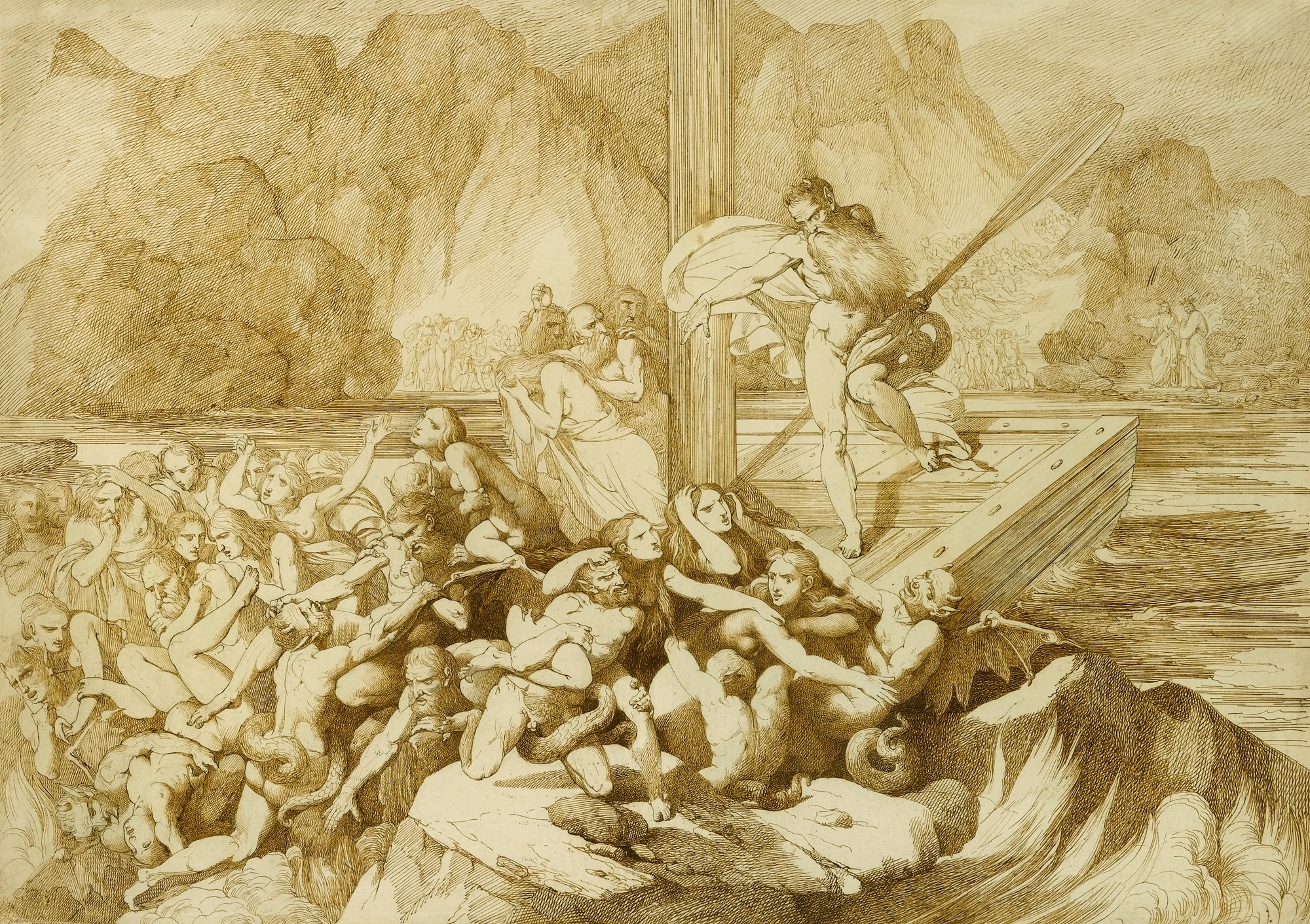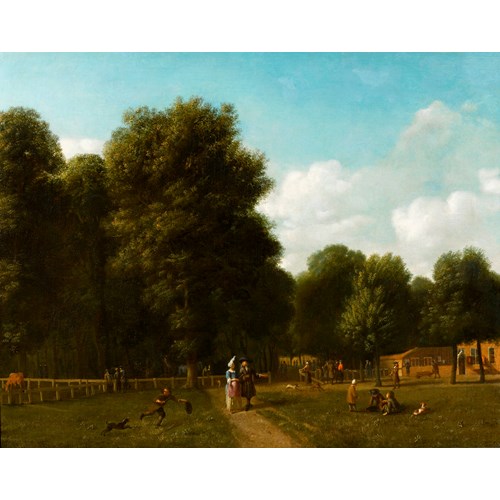Luigi Sabatelli
Dante and Virgil Watching Charon Ferrying Souls to Hell
Epoque 1750-1850, 18th century, 19th century
Origine Italy
Medium Pen, Brown ink, Blac chalk
Dimension 44 x 62 cm (17³/₈ x 24³/₈ inches)
- Dante, Inferno, Canto III
The subject of this present work is taken from Dante’s Inferno, Canto III. Dante, as well as Milton and other Romantics provided Luigi Sabatelli with a treasure trove of inspiration that suited his imaginative artistic personality. Other drawings by Sabatelli that illustrate scenes from Dante are known, and can be dated to his last Roman period from 1789 to 1794. Indeed, another version of this same subject is displayed in the Castello Sforzesco, Milan.¹ A further drawing of Dante and Virgil is in the Palais des Beaux-Arts, Lille, but may be dated stylistically to earlier in the artist’s career.² Beatrice Paolozzi Strozzi, in her catalogue of the Sabatelli drawings exhibition at the Uffizi, comments on the renewed fascination with selected episodes from Dante, an interest which Sabatelli shared with contemporary artists such as Giuseppe Cades (1750-1799) and Felice Giani (1758-1823), and which can probably be traced to the influence of John Flaxman (1755-1826), a contemporary English artist who helped to popularise the concept of the Sublime.³
The ostensibly complete nature of this present drawing seems to suggest that it was designed to stand as a work in its own right rather than as a preparatory sketch for a painting. Sabatelli was a widely respected draughtsman as well as a fresco painter and he produced a number of independent, highly finished drawings for sale to collectors. Trained in the neo-Classical tradition in Florence, he took his inspiration from Ariosto’s Orlando Furioso. Arguably, however, his pictorial representation of Dante’s words, are among his most powerful and innovative drawings. The very composition of Dante and Virgil Watching Charon Ferrying Souls to Hell, with its swarm of massed, despairing humanity, is depicted with all the intensity of their wretched plight. The terrifying figure of Charon, beautifully described in Virgil’s epic Aeneid as well as by Dante, glowers over his charges with crazed eyes and an unkempt, flowing beard. His impressively detailed musculature bears the hallmarks of Michelangelo’s (1475-1564) influence on Sabatelli and perhaps also conjures up the figures of William Blake (1757-1827). On the far shore, the delicately rendered figures of Dante and Virgil can be seen gesticulating and conversing with each other.
Sabatelli was regarded by some as the most talented of Tuscan painters after Pietro Benvenuti (1769-1844). After studying in Florence he settled in Rome and in 1808 he accepted a professorship of painting at the Academy of Fine Art in Milan. One of his finest achievements was his series of frescoes based on Homer’s Iliad that now adorn the walls of the Picture Gallery in the Pitti Palace, Florence.
¹ Collection F19/2.
² Brejon de Lavergnée B., see lit., p. 209, no. 598, reproduced.
³ Paolozzi Strozzi, B., see lit..
Epoque: 1750-1850, 18th century, 19th century
Origine: Italy
Medium: Pen, Brown ink, Blac chalk
Dimension: 44 x 62 cm (17³/₈ x 24³/₈ inches)
Provenance: Sale, London, Christie's, 21 November 1996, lot 6;
where acquired by Jeffrey E. Horvitz.
Literature: Barbara Brejon de Lavergnée, Catalogue des Dessins italiens ..., Paris/Lille 1997, p. 209, no. 598, reproduced;
Beatrice Paolozzi Strozzi, Luigi Sabatelli, exhibition catalogue, Florence, Uffizi, 1978.
Plus d'œuvres d'art de la Galerie









